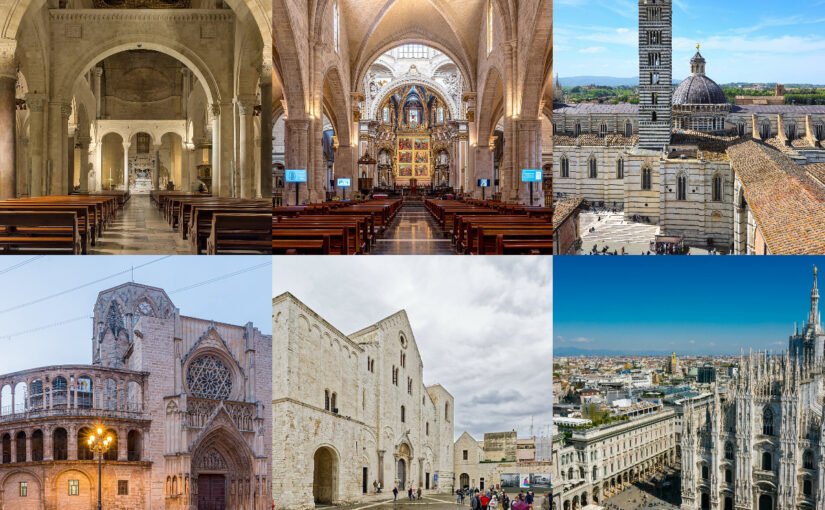It began with an audacious leap. The world of Mediterranean churches was changing, shedding the massive barrel vaults and fortress-like walls of the Romanesque in favor of verticality, light, and ornamentation that really belonged to another era: the Gothic. Pointed arches soared over bustling piazzas. Ribbed vaults unfolded above the prayers of thousands. Flying buttresses danced around sacred enclaves, supporting ambitious vaults as high as the dreams of their communities. Yet, as the Gothic style swept across southern Europe, it took on a distinctly Mediterranean resonance. If French cathedrals reached for the sky with razor-sharp skeletons and kaleidoscopic stained glass, their cousins in Italy and Spain married flamboyant flourishes with marble warmth, local color, and urban swagger.
The Spirit and Technology of Transformation
Gothic architecture arrived in Mediterranean Europe amid waves of civic renewal, religious ambition, and technological innovation. City-states flourished in Italy, new principalities rose in Spain, and the Pope’s seat at Rome glittered as ever. Across these societies, the church remained a center of gravity. It was not just a place for worship, but a community anchor, a statement of collective pride, and a canvas for technological display.
Why did congregations begin to demand larger, loftier, and brighter sanctuaries? The answer lay partly in theology. Medieval Christians craved light that seemed to pierce the heavens, a real metaphor for divine presence. The vertical escalation of churches mirrored the spiritual yearning for transcendence. It also lay in competition, as cities vied to outdo neighbors with the grandest cathedral spires and most lavish statuary. Advances in engineering made this feasible: pointed arches distributed heavy loads more efficiently, rib vaults enabled broader and higher ceilings, and flying buttresses allowed architects to open up the walls, introducing larger windows without compromising stability.
The Mediterranean Gothic didn’t simply copy Northern forms; it transformed them. Warm southern sunlight demanded adaptations. In Spain and Italy, architects favored open, airy interiors and sturdy walls. Local materials mattered as well. Brick, limestone, and colored marble abounded, giving these structures their rich and varied hues. Regional artisans embedded local motifs and symbols into facades, capitals, and altars, infusing a sense of place into every stone.
Distinctive Features, Enduring Beauty
Northern European cathedrals—think Chartres or Notre-Dame in Paris—often appear skeletal, their walls punctured with stained glass, their interiors awash in radiant color. In the Mediterranean, Gothic churches preserved a solidity, darkness, and warmth that the northerners sacrificed for light. The signature features, though, remain unmistakable. Pointed arches frame windows and doorways, reaching upward in taut curves. Ribbed vaults traverse ceilings, intersecting in elaborate patterns custom-made for each space. Flying buttresses arc gracefully beyond the nave, engineering marvels that permitted lacy walls and gravity-defying heights.
Rose windows gleam on facades, filtering sunlight into dazzling disks of color and geometry. Pinnacles and spires rise above city squares, hinting at both aspiration and civic pride. Elaborate sculptural programs grace entrances, with prophets, saints, and angels arrayed in narrative scenes that preach to all who pass.
Mediterranean Gothic, however, delights in regional adaptation. In Italy, polychrome marble inlays create facades that shimmer in Florence’s midday sun, while broad brick walls in the Po Valley reflect the earthy foundation beneath. Spanish masons carved delicate ornaments and blended Moorish influences, producing buildings that could be both fortress-like and enchanting. In Catalonia, rib vaults sweep elegantly overhead, supported by columns that seem to spring from a painter’s brush. The interplay of openness and mass creates interiors both inspiring and protective.
Mediterranean Jewels: Churches that Shaped a Civilization
Milan Cathedral, Italy (begun 1386, Gothic)
Take the Milan Cathedral, begun in 1386. It stands at the heart of Lombardy, a forest of pinnacles and statues carved from pale marble. Its façade glistens, even in rain, and its size awes millions who visit every year. Inside, shafts of colored light spill across the nave, illuminating sculptures that recount stories of faith and civic glory. The cathedral’s ambitious scale was a statement: Milan intended to rival all of Christendom. Over centuries, architects fused French Gothic engineering with local traditions, producing a church as much Mediterranean as European.
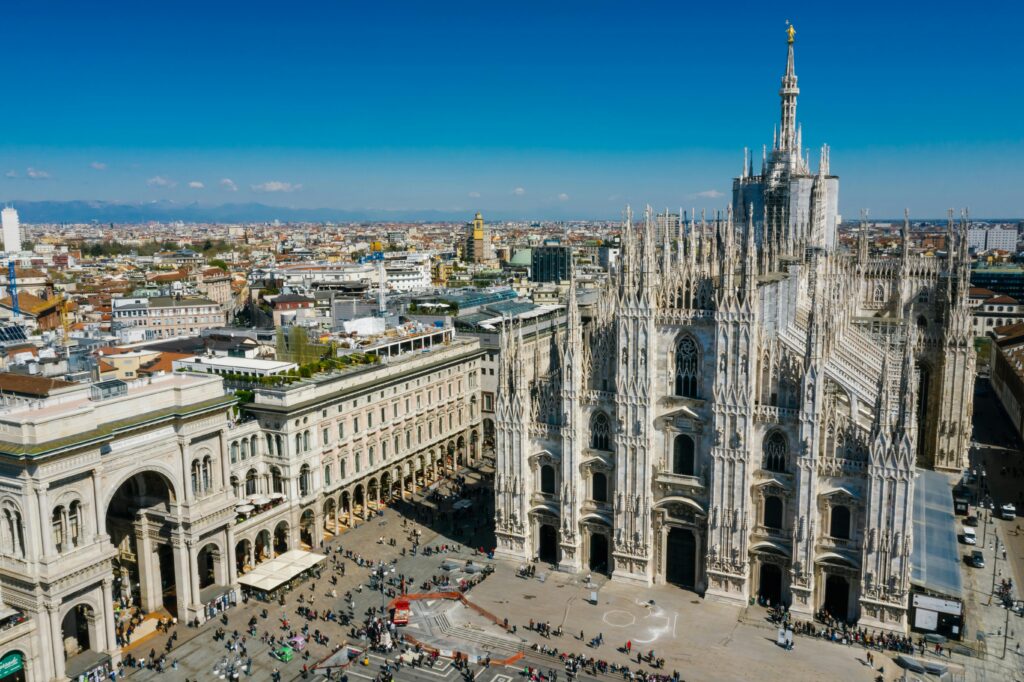
Duomo of Siena, Italy (begun 1215, Gothic-Romanesque)
The Duomo of Siena, begun in 1215, blends Gothic with lingering Romanesque. Its façade strikes the eye with alternating bands of black and white marble, a motif unique to the city’s identity. Pointed arches crown the doors, while intricate carvings depict biblical scenes and civic emblems. The interiors, bathed in spectral light, reveal a treasure house of paintings, sculpture, and mosaic. Siena’s duomo demonstrates how the Gothic spirit could intermingle with older structural ideals and indigenous pride, yielding a hybrid of drama and devotion.
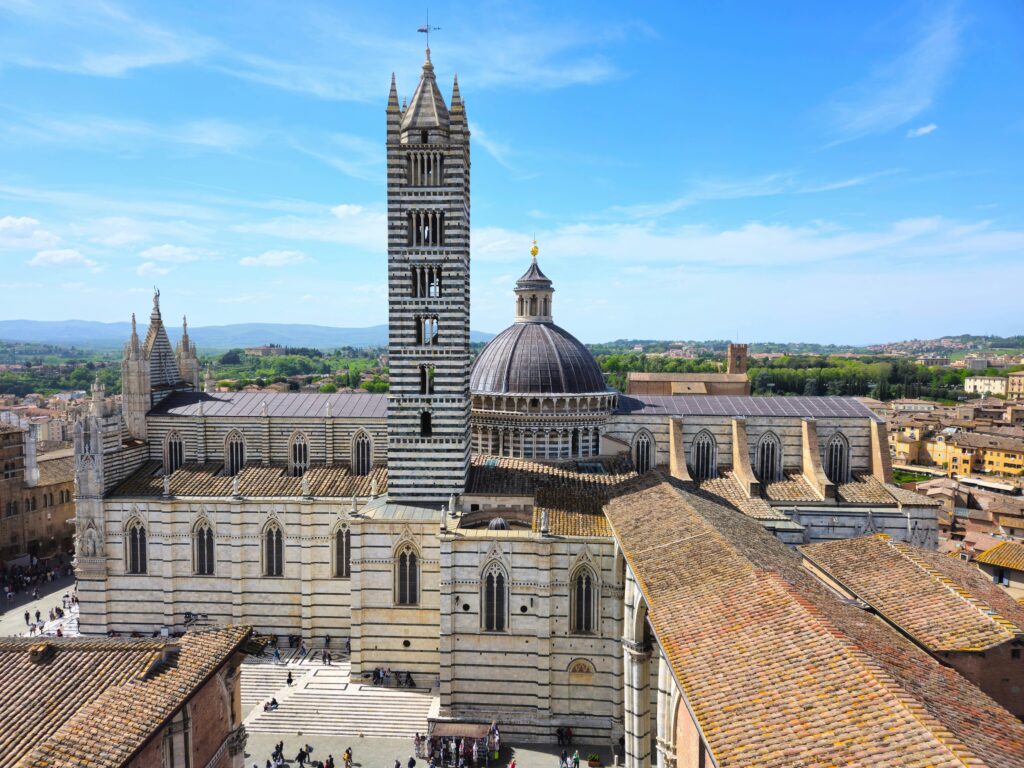
Valencia Cathedral, Spain (begun 1262, Valencian Gothic)
In Spain, the Valencia Cathedral, started in 1262, rises in the heart of its vibrant city. Valencian Gothic offers soaring pillars, wide chapels, and a clever mix of baroque and medieval influences. Mediterranean motifs swirl about the windows, while light dances across stone floors in the late afternoon. The cathedral is renowned for its Holy Grail relic, yet its real power lies in the seamless blend of styles that mark centuries of change and coexistence.
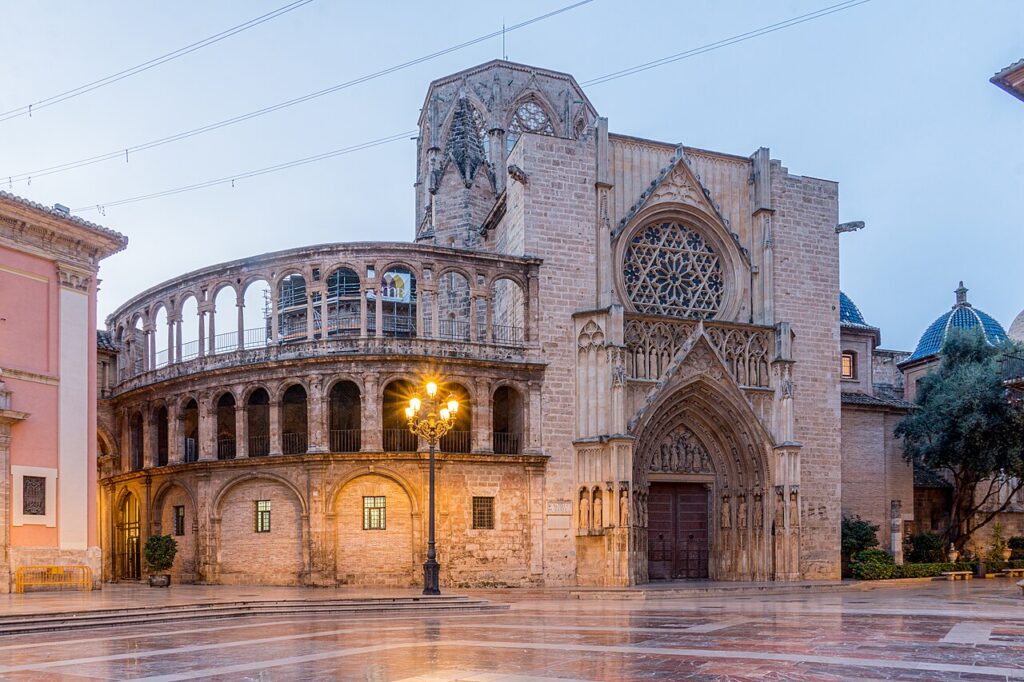
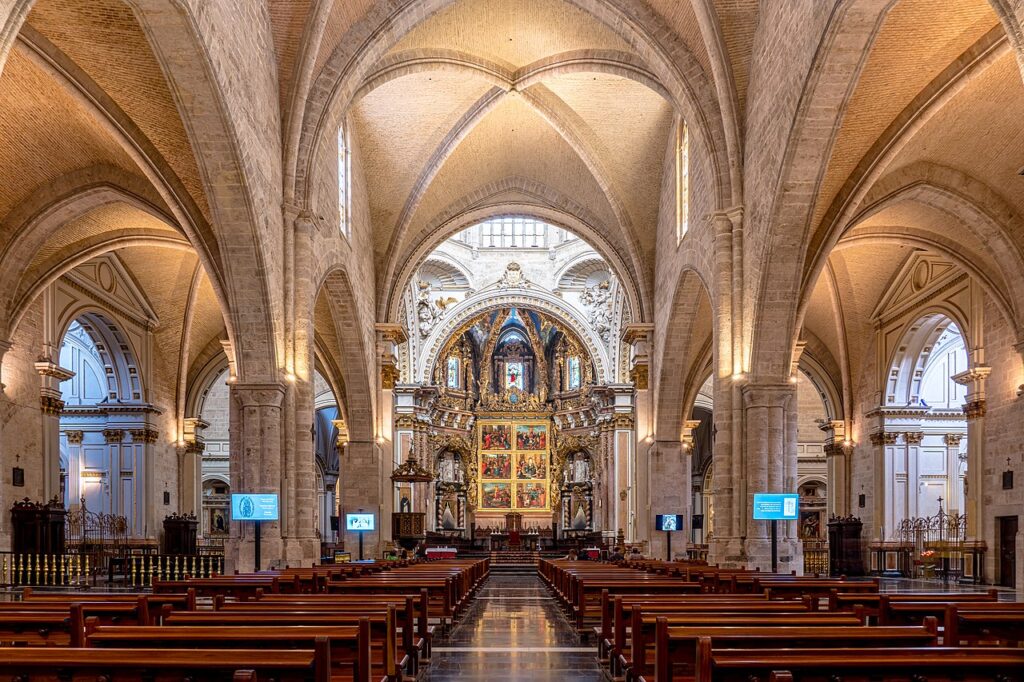
St. Nicholas Church, Bari, Italy (1087–1197, Apulian Romanesque-Gothic transition)
St. Nicholas Church in Bari (1087–1197) stands as a transitional marvel. Its robust Romanesque base supports Gothic arches, woven together in a dance of old and new. Stone construction anchors it to Apulia’s landscape. Internally, spaces echo the light and shadow that define Mediterranean devotion. St. Nicholas is a reminder that the march of architecture is rarely linear; innovations adapt, overlap, and meld, especially where sea and land meet.
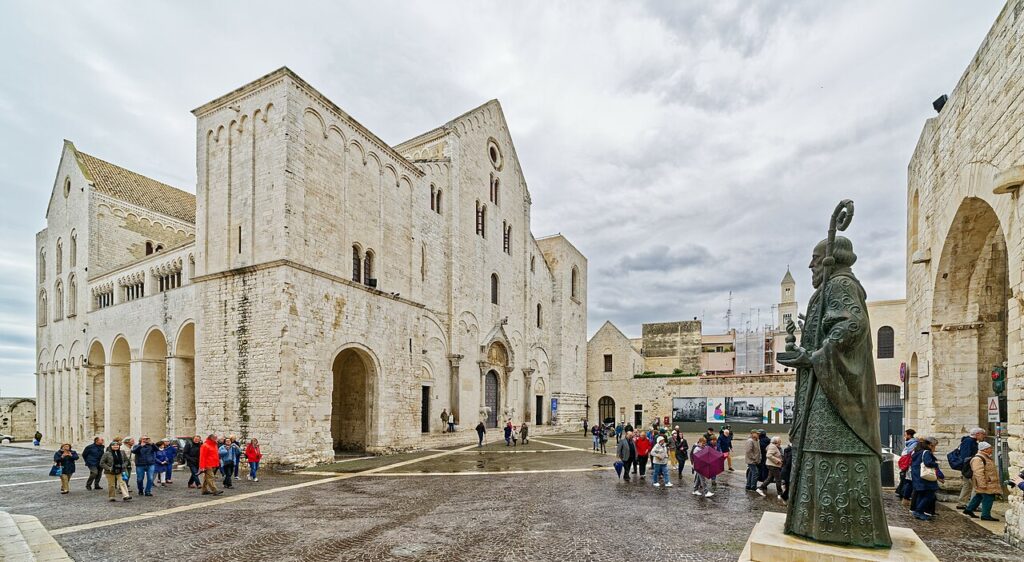
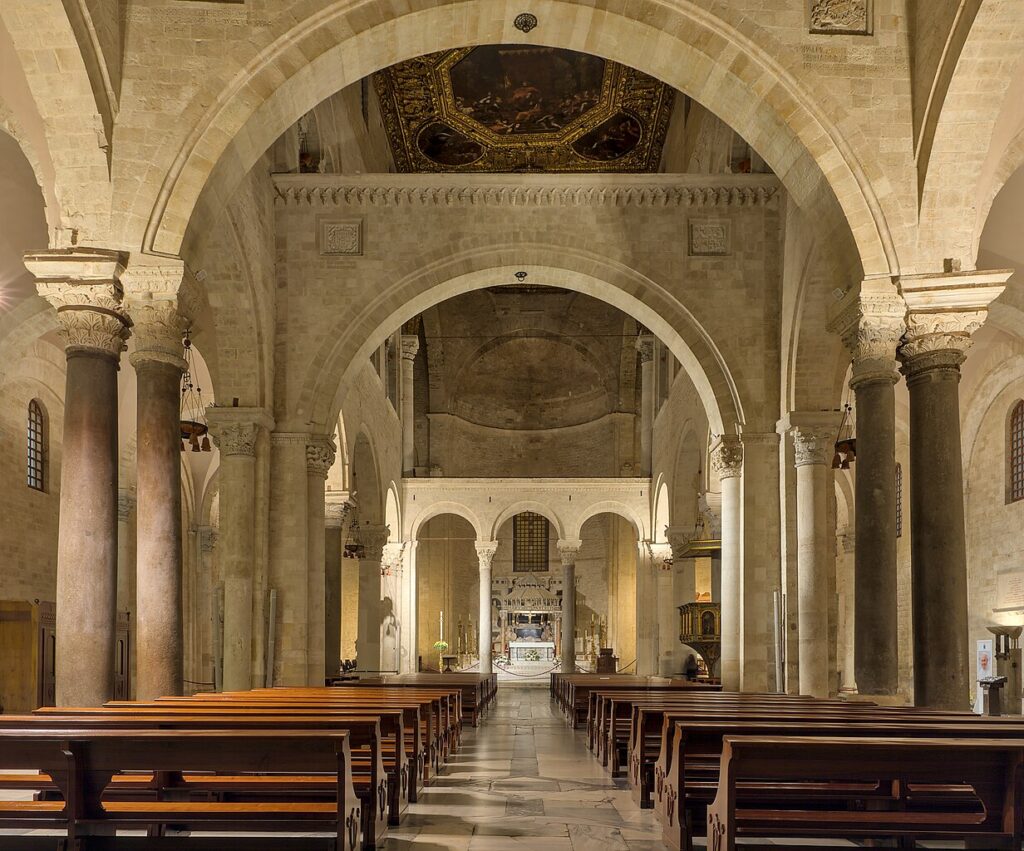
Artistry, Ambience, and Urban Transformation
Mediterranean Gothic churches did far more than shelter worshipers. They shaped urban skylines, gave cities their silhouette, and anchored trade, festivals, and memory. The verticality and ornamentation elicited awe, inspiring pride in rich and poor alike. Stained glass filled interiors with ephemeral color, while sculpture animated stories for the largely illiterate population.
Within these sanctuaries, vertical space functioned as an invitation, urging believers to look upward, to imagine themselves surrounded by angels and saints. Colored light from rose windows shifted by the hour, blending practical illumination with sacred symbolism. Sculptural decoration on façades and capitals functioned not just as mere embellishment but as a living catechism.
Mediterranean Gothic balanced fortress-like solidity with soaring inspiration. Churches doubled as citadels and refuges in times of war, yet their architecture always pointed beyond the material to the sublime.
Enduring Legacy and Contemporary Significance
The passage of centuries has not diminished the impact of Mediterranean Gothic. The pointed arches of Milan and the stratified marble of Siena influenced countless builders, shaping the trajectory of Renaissance, Baroque, and even modern design. Many Gothic churches survive as vibrant heritage sites, their stones recalling old faith and new hope.
Travelers and students continue to trek across Italy and Spain, drawn by the mystery and majesty of these structures. From the cool shadowed nave of Valencia Cathedral to the dazzling piazza overlooked by Milan’s spires, the Mediterranean Gothic church remains an invitation to wonder, reflection, and renewal.
To wander these corridors is to touch the legacy of passion and ingenuity that only the fusion of art, faith, and local identity can achieve.
Resources for Further Exploration:
- Mediterranean Gothic Architecture – Spanish Art: https://www.spanish-art.org/spanish-architecture-mediterranean-gothic.html
- Italian Gothic Architecture, Wikipedia: https://en.wikipedia.org/wiki/Italian_Gothic_architecture
- Top Gothic Jewels in Valencia, Northleg: https://en.northleg.com/valencia/attractions/top-gothic-jewels/
- Italian Gothic Architecture, Italy Review: https://www.italyreview.com/italian-gothic-architecture.html
- Gothic Architecture. Characteristics, Spain Then & Now: https://www.spainthenandnow.com/spanish-architecture/gothic-architecture-background
These resources offer deeper insights and virtual access to Mediterranean Gothic wonders for those drawn to the grace, drama, and lasting allure of sacred architecture.
If our work has inspired you, helped you grow, or simply brought a little warmth to your day, consider supporting Thalysia.com with a small donation. Your contribution helps us continue exploring ancient landscapes, documenting local traditions, and celebrating the art of living well.
